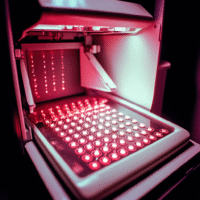Understanding the Study
This study looked at two ways to manage pain after a specific surgery called laparoscopic nephrectomy, which is the removal of a kidney using small cuts. The two methods compared were:
- Anterior Quadratus Lumborum Block (QLB-LSAL): A new technique that targets a specific area in the lower back.
- Thoracic Paravertebral Block (TPVB): A more traditional method that also helps with pain relief.
The goal was to see if the new method (QLB-LSAL) worked just as well as the traditional one (TPVB) for controlling pain after surgery.
What Did the Study Find?
The results showed that:
- The average pain score in the first 24 hours after surgery was similar for both methods, with QLB-LSAL at 1.92 and TPVB at 1.79. This means both methods provided good pain relief.
- QLB-LSAL was not worse than TPVB, which is a positive outcome.
- TPVB provided a larger area of numbness shortly after the procedure, but both methods used similar amounts of additional pain medication after 24 hours.
- No significant differences were found in blood pressure or recovery times between the two groups.
What Does This Mean for Patients and Clinics?
For patients:
- Both pain relief methods are effective, so patients can discuss with their doctors which option might be best for them.
- QLB-LSAL is a good alternative if the traditional method is not suitable.
For clinics:
- Clinics can consider adopting QLB-LSAL as a standard option for pain management after laparoscopic nephrectomy.
- Training staff on both techniques can enhance patient care and comfort.
Real-World Opportunities
Hospitals and doctors can:
- Implement QLB-LSAL in their pain management protocols.
- Educate patients about their pain management options before surgery.
Measurable Outcomes to Track
Clinics should monitor:
- Patient pain scores in the first 24 hours after surgery.
- The amount of additional pain medication used.
- Recovery times and any complications.
AI Tools to Consider
AI solutions can help in:
- Tracking patient outcomes and pain scores through apps.
- Analyzing data to improve pain management strategies.
Step-by-Step Plan for Clinics
To start applying these findings:
- Begin with training staff on the QLB-LSAL technique.
- Start using QLB-LSAL for a small group of patients.
- Collect and analyze data on pain relief and recovery.
- Gradually expand the use of QLB-LSAL based on patient feedback and outcomes.
Further Reading
For more details about this study, you can visit the research link: Study on Pain Management Techniques.




























